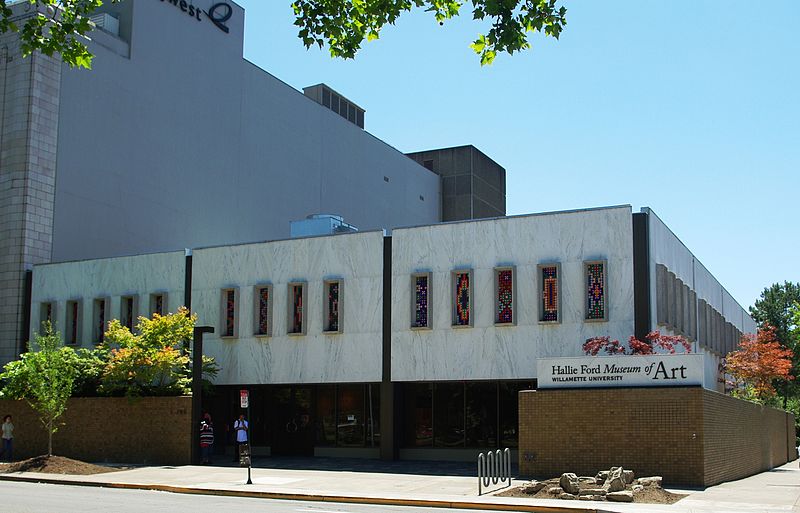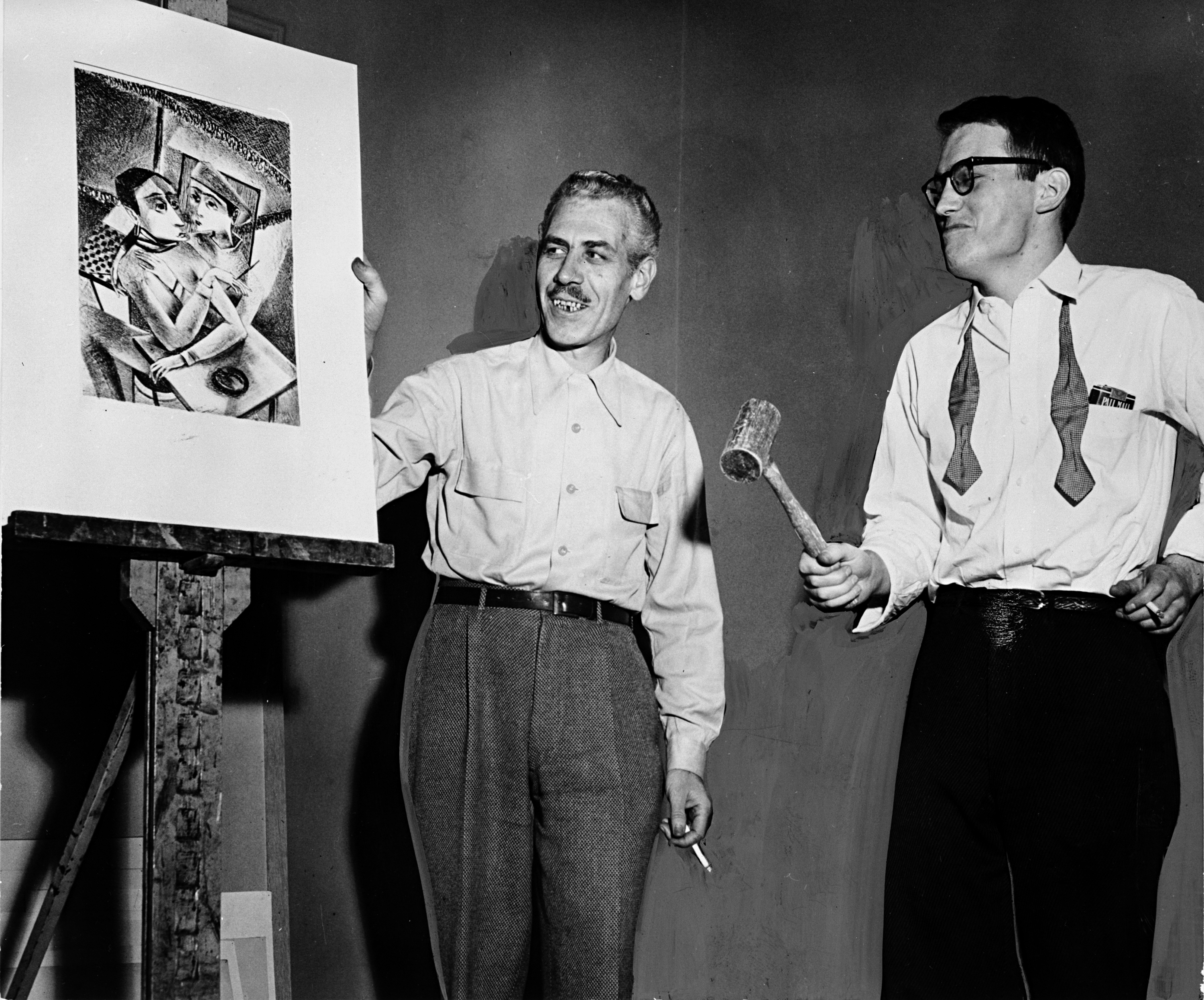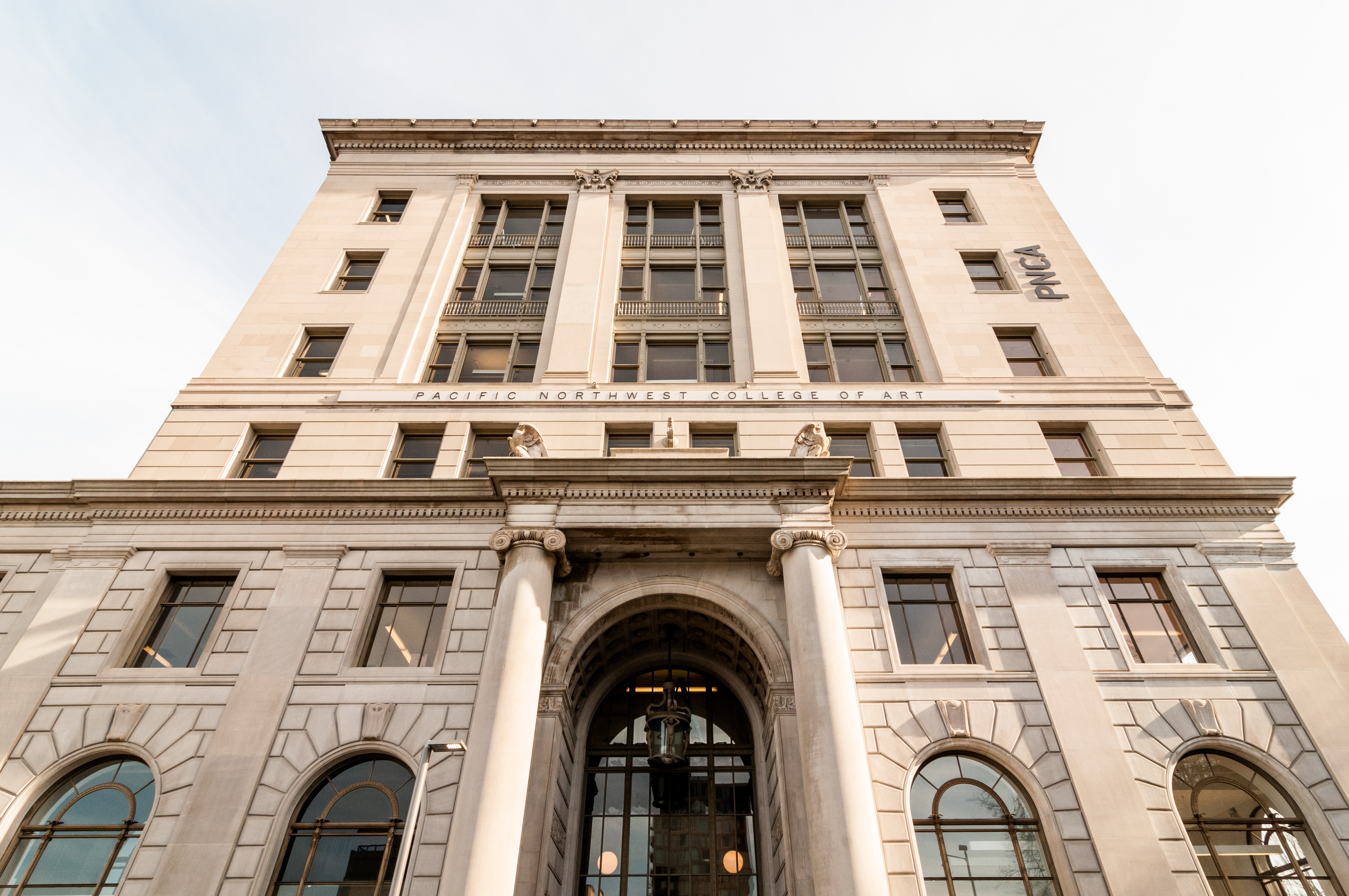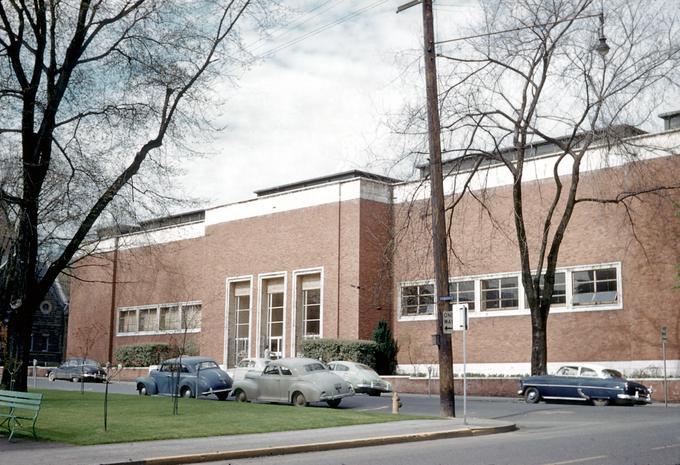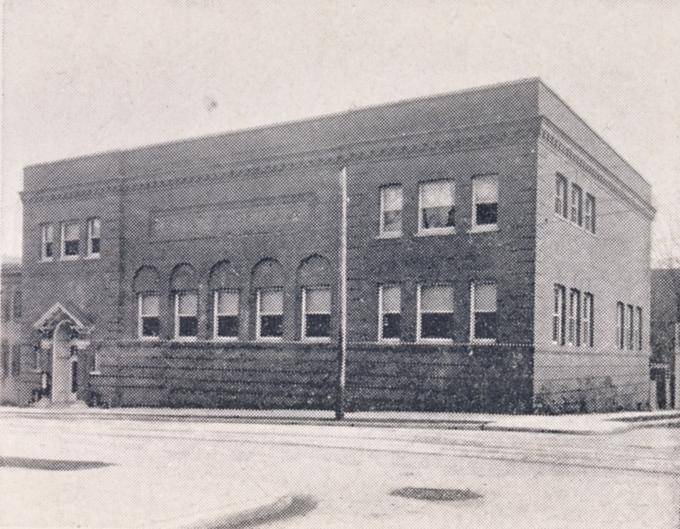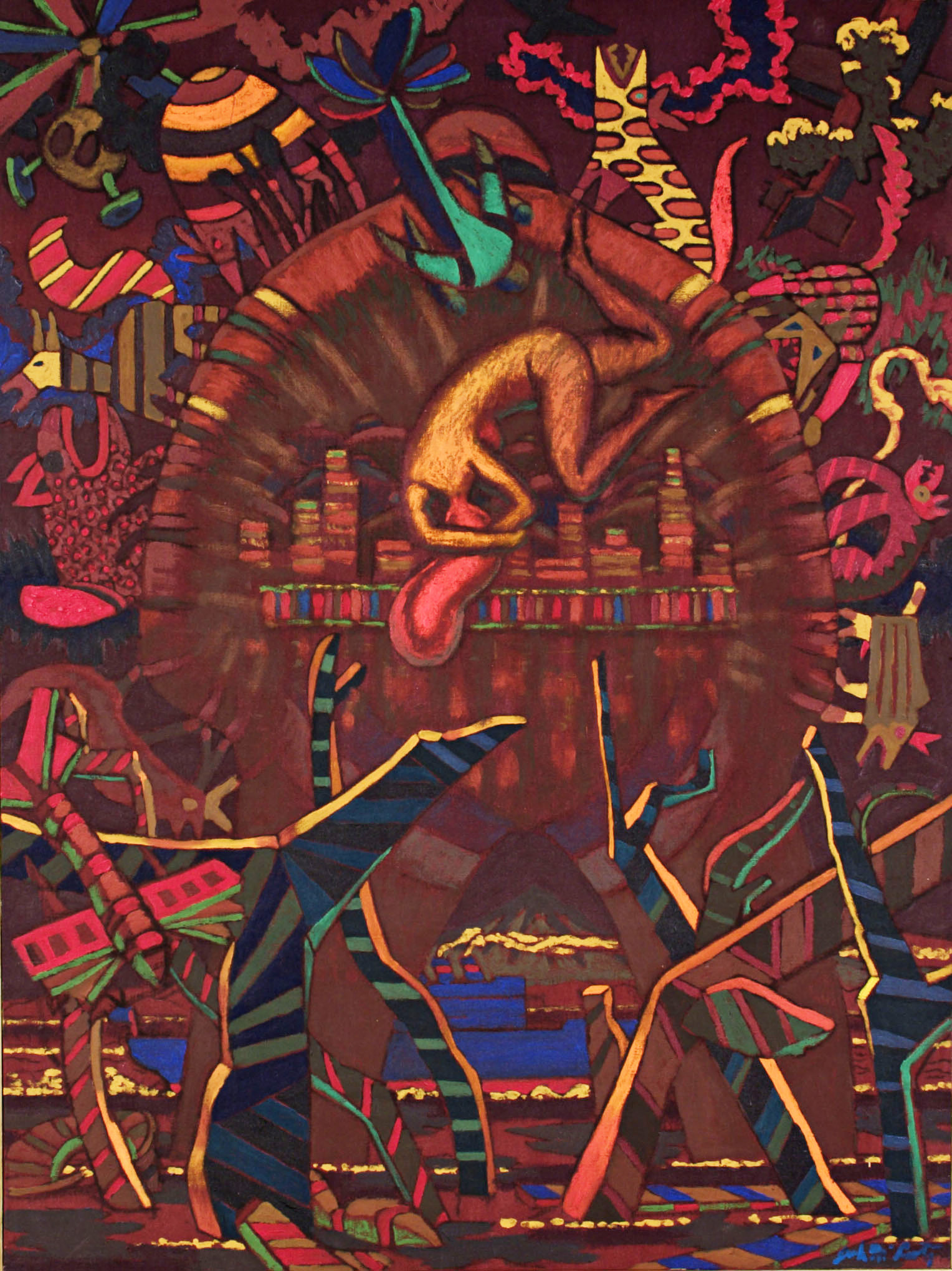George Johanson was a Portland painter and printmaker known for his images of the erupting Mount St. Helens, panoramic Portland as imagined from his home near the Vista Bridge, boaters and loafers along the banks of the Willamette River, and cats and rabbits intercepting human life. Drawing on the work of other modern artists, sometimes in direct quotation, he nonetheless rejected some of modernism's tenets to create imagery that was distinctly his own.
George Eugene Ernest Johanson, Jr., was born in 1928 in Seattle, the oldest of three children of parents of Scandinavian descent. As a child, he was skilled at drawing; and in 1946, at the age of seventeen, he enrolled at Portland's Museum Art School (now the Pacific Northwest College of Art). Though he later spent time in New York, Mexico, and London, Portland has remained Johanson's home and imaginative center.
When Johanson arrived at the Museum School, the locus of modern art was shifting from Paris to New York. His instructors William Givler, Louis Bunce, and Jack McLarty alerted him to developments in New York and urged him to spend time there. They also offered him alternative approaches to the Abstract Expressionist painting of the New York School.
Johanson spent 1950-1953 in New York studying printmaking and meeting such well-known artists as Willem De Kooning, the Dutch émigré whose controversial paintings of women Johanson saw at the Stable Gallery. Johanson is primarily a figure painter, and De Kooning's introduction of human figures into Abstract Expressionist idiom provided a crucial example of how to be a modernist without committing to complete abstraction.
While completing alternative service in 1953-1955 with a Quaker group in Mexico, Johanson met Phyllis Burnham, a Canadian. They married in Portland in 1955, and their son Aaron was born in 1958. Johanson began teaching at the Museum School in 1955 and remained on the faculty for twenty-five years, retiring in 1980.
During the 1950s and early 1960s, Johanson's paintings were Abstract Expressionist with suggestions of figures and landscape, but a sabbatical in London in 1965-1966 introduced him to the work of Francis Bacon and David Hockney. These artists' radical art and their unabashed rendering of the human form set Johanson on a new path.
Johanson's distinctive style fully emerged in the 1970s with such works as Black Rabbit's Red Room (1978; Hallie Ford Museum of Art), in which portraits of his artist friends Bunce, McLarty, and Manuel Izquierdo are combined with self-portraits and images of his parents, all overseen by a rabbit perched on a table. Bold color, strong patterns, and imagery that indexes Johanson's life are characteristic of his mature work. His highly original art contains references to Renaissance art, German Expressionism, Surrealism, the New York School, British painting of the 1960s, and the work of Portland artists such as Bunce, McLarty, and James McGarrell.
Paintings by Johanson are in the Smithsonian American Art Museum, the Seattle Art Museum, the Portland Art Museum, the Jordan Schnitzer Museum of Art (University of Oregon), the Hallie Ford Museum of Art (Willamette University), and numerous other public, corporate, and private collections. Johanson died of heart failure in October 2022.
-
Johanson, George, bb003377.
George Johanson with two of his woodcuts. Oreg. Hist. Soc. Research Lib., bb003377
Related Entries
-
Hallie Ford Museum of Art
The Hallie Ford Museum of Art at Willamette University has only been in…
-
![Louis Bunce (1907-1983)]()
Louis Bunce (1907-1983)
Louis Bunce, a major painter and printmaker beginning in the 1930s, is …
-
![Manuel Izquierdo (1925 - 2009)]()
Manuel Izquierdo (1925 - 2009)
Manuel Izquierdo, who arrived in Portland in 1942 as a teenaged refugee…
-
![Pacific Northwest College of Art]()
Pacific Northwest College of Art
Pacific Northwest College of Art (PNCA), founded in 1909 by the Portlan…
-
![Portland Art Museum]()
Portland Art Museum
The Portland Art Museum, which opened in 1895 in the city library with …
-
![Portland Art Museum School]()
Portland Art Museum School
In October 1909, the Portland Art Association (PAA) opened its school, …
-
![William Givler (1908-2000)]()
William Givler (1908-2000)
William Givler was an artist and educator who joined the faculty of the…
-
![William James (Jack) McLarty (1919-2011)]()
William James (Jack) McLarty (1919-2011)
William James “Jack” McLarty, one of Oregon’s veteran modern painters, …
Map This on the Oregon History WayFinder
The Oregon History Wayfinder is an interactive map that identifies significant places, people, and events in Oregon history.
Further Reading
Guenther, Bruce. 50 Northwest Artists. San Francisco: Chronicle Books, 1983.
Hicks, Bob. "NW art giant George Johanson dies at 94." Oregon Arts Watch. October 16, 2022.
Hull, Roger. George Johanson: Image and Idea. Salem: Hallie Ford Museum of Art (Willamette University), 2007.
Johanson, George. Equivalents: Portraits of 80 Oregon Artists. Exhibition catalogue. Portland: Portland Art Museum, 2002.
Van Cleve, Jane. "A Conversation with Artist George Johanson." Stepping Out Northwest (Fall 1981): 50-57.


